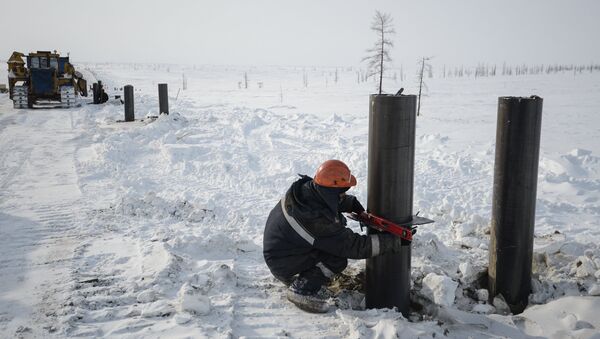According to experts, hydrocarbon prospecting operations now face a number of problems, such as heterogeneous upper sections of oil-and-gas wells or low-yield seams.
In connection with this, scientists are actively developing comprehensive geophysical methods and technologies to make it possible to illuminate seams with seismic radiation and to detect noise seismic emissions after an artificial disturbance.
READ MORE: New Russian Steel to Increase Service Life of Oil Pipelines
"We have suggested a passive seismic-electric method making it possible to register the mutual-correlation function of seismic and electric noises," said Danil Kudinov, an assistant professor at the University's Institute of Military Engeneering.
"In both cases, high-yield seams, located 1,800-2,000 meters beneath the ground, were marked by maximum mutual-correlation function levels that exceeded normal background levels by five to seven times. This highlights a seismic-electric effect," Kudinov noted.
In his opinion, maximum mutual-correlation function levels are detected when seismic and electric noises coincide in terms of both their time and phase. This is why their simultaneous detection expands the range of factors making it possible to identify hydrocarbon seams.
READ MORE: Russia Expects Oil & Gas Profits Five Times Greater than Projected in 2018
Researchers hope that this will help locate such seams more effectively using direct search methods. It is necessary to conduct lots of fieldwork in various geological-geophysical conditions to implement the passive seismic-electric method still further.
According to the University's press service, this project, whose results have been published in the journal Geology and Geophysics was sponsored by the Russian Fundamental Research Fund, the Government of the Krasnoyarsk Territory and the Territory's Fund for Supporting Research and Science and Technological Activity.




